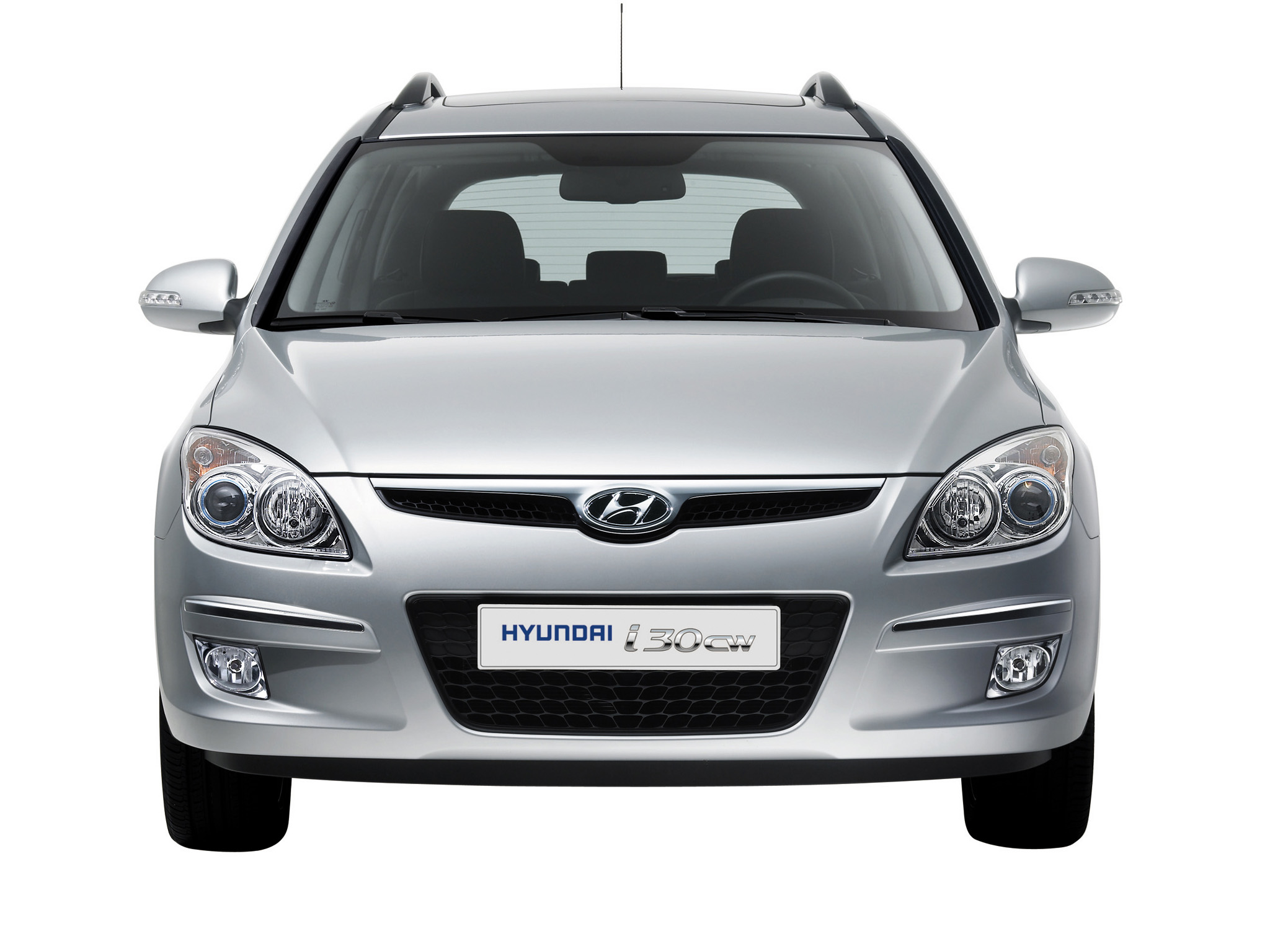Hatchback Hyundai i30 I

Hyundai seriously and, incidentally, is not unreasonably decided to conquer Europe - and it is believed that this is why it was decided to radically change the lineup. We have already seen Hyundai i20, now look at the new C-class from Hyundai - it's i30 (although we consider it the second - this is the first representative of a new line of "European" cars Hyundai).

Incidentally, the first generation of Hyundai i30 was created not just a "for Europe", and "Europe and in Europe" - Hyundai i30 design was developed in Rüsselsheim (Germany), and made this car at a new plant in Czech Republic - European car turns completely.

But when you look at the new Hyundai i30, then there is a persistent deja vu - it is very i30 "something" like, and he recalls no other than the "KIA Ceed after restyling." But that, in general, is not it strange - the fact that the new Hyundai i30 is built upon KIA Ceed. But, as you can see, Hyundai i30, in addition to the platform, inherited from the Ceed has a body and architecture in general. When viewed in profile relationship i30 and Ceed issue: rear rack with a small triangular window, roof line, the location and shape of the tank hatch. The form of the hood of these cars is almost the same as (at least stiffening of both in one place and equally smoothly into the front rack) ... and the content "under the hood" it's the same.

Yes - in consideration Hyundai i30 1.6-liter (122 hp) engine - the same as that of the KIA Ceed and a 4-way "automatic", and the battery of the same capacity. A similar architecture of the engine compartment Ceed i30 did not allow designers to significantly change the appearance of the front, so they differ only in the shape of the head of optics and design of the bumper (which have lower ends of both rubber skirt that with such a large overhang in handy).

Much of the Hyundai i30 has been changed in the rear. Hyundai i30 It boasts a more modern trends and looks interesting. Only here for the benefit of it? First, the image of the Ceed, in our view, a more holistic. And secondly, for the same with the Hyundai i30 volumes of luggage, opening at the KIA Ceed - more (a distinct advantage when loading marker items in the luggage). And things in the Hyundai i30 can put a very large - with folded rear Cedeño, the amount of luggage up to 1250 liters.
But having got to the salon i30, still get the feeling that the Ceed and Hyundai i30 are at looking like inside - completely different cars (apparently this was done to avoid direct competition within the corporation).

Of course, in a deliberately limited scope of the internal space of the platform, radically change something does not work. But the interior of the Hyundai i30, thanks to the imagination of designers, has turned out much "youth." This applies to almost everything - from doors to trim dashboard. Of course, changed and ergonomics (although only slightly ... but not always for the better).
For example, the control of central locking in the Hyundai i30 may be only the driver (the button is located just in the driver's armrest.) In order to obtain the necessary information from the "trip computer" in the Hyundai i30 need to learn to skillfully press key, located behind the wheel, close to the dashboard. This, of course, little things, but it does not add convenience.

As we have already mentioned - on the Hyundai i30 is the same as that of the Ceed, engines and transmissions, so no differences in the behavior of vehicles during the test drive was not observed. But the Hyundai i30 is a feature of: Hyundai decided to distinguish himself from KIA suspension tuning. At Hyundai i30 suspension although only slightly, but softer (for the sake of comfort and endurance).
It remains to add that Kia and the Hyundai warranty is five years or 150,000 kilometers. Well, another plus in favor of ...
In terms of security among all Hyundai i30 "at" - ABS, ESP, six airbags, active head restraints.
Specifications i30.Benzinovye Hyundai Motors
γ-1, 4, γ-1, 6 β-2, 0
Type p4 p4 p4
Displacement, cm3 1396 1591 1975
Power, HP / R / min 109/6200 122/6200 143/6000
Maximum torque Nm / r / min 137/5000 154/4200 186/4600
Max. speed, km / h 187 192 205
Dynamics of 0-100 km / h, 11.6 10.9 10.4
Average consumption of gasoline, l/100km 6.1 6.4 7.1
Number of valves 16 16 16
Multi-point fuel injection system supply
Compliance with environmental standards Euro 3, 4
Transmissions
γ-1, 4, γ-1, 6 β-2, 0
Mechanical M5CF1 (5 assists) M5CF1 (5 assists) M5CF2 (5 assists)
Automatic - A4CF1 (4 assists) A4CF2 (4 assists)
Ratios
Automatic transmission γ-1, 4, γ-1, 6 β-2, 0
One transmission - 2.919 2.919
2nd gear 1.551 1.551
3 transfer of January 1
4 0.713 0.713 Transfer
Reverse 2.48 2.48
Diesel engines
u-1, 6, u-1, 6 D-2, 0
Type i4 i4 i4
Displacement, cm3 1582 1582 1991
Power, HP / R / min 115/4000 90/4000 140/3800
Maximum torque Nm / r / min 255/1900 ~ 2750 235/1750 ~ 2500 304/1800 ~ 2500
Max. speed, km / h 172 188 205
Dynamics of 0-100 km / h, 13.8 11.5 10.3
Average consumption of gasoline, l/100km 4.7 4.7 5.4
Number of valves 16 16 16
Power system direct injection
Compliance with environmental standards Euro 4
Transmissions
u-1, 6, u-1, 6 D-2, 0
Mechanical M5CF3 (5 assists) M5CF3 (5 assists) M6GF2 (6 assists)
Automatic A4CF2 (4 assists) -
Ratios
Automatic transmission u-1, 6, u-1, 6, u-2, 0
A transfer of 2.919 -
2nd gear 1.551
3 transmission 1
4 transfer of 0.713
reverse 2.48